
Macro and Micro-Segmentation (B2B): How To Provide Hyper-Personalized Experiences
How can macro and micro-segmentation (B2B) improve your product marketing ROI and contribute to more revenue and product growth?
Segmentation helps you organize your target audience into cohorts that share a characteristic. That way, you can deliver hyper-personalized experiences that speak directly to their needs.
In this article, we’ll cover:
- What macro and micro-segmentation are, and the differences between them.
- The advantages of using micro-segmentation.
- The most common variables used in B2B segmentation.
- How to deliver personalized experiences after creating user segments.
Let’s get started!
Try Userpilot Now
See Why 1,000+ Teams Choose Userpilot

Macro and micro-segmentation summary
- B2B market segmentation involves dividing your entire customer base into smaller user segments with shared characteristics, such as industry, location or in-product behavior.
- There are two different approaches to the segmentation process – macro segmentation and micro-segmentation.
- In macro segmentation, you divide customers into segments based on their company’s characteristics, such as business size, location, or industry.
- Micro-segmentation is specific to the actual customers using your product, not their business as a whole. It involves creating user segments based on variables such as product behavior, purchasing preferences, and loyalty. It’s the best option for delivering hyper-personalized content and in-app experiences.
- The most common variables for business segments include demographics or business size, operating variables, purchasing approaches, and situational factors.
- While micro-segmentation takes a lot of resources and time to implement, it’s the better of the two segmentation strategies since it’s more granular being based on individual user behavior.
- To complete micro-segmentation in B2B SaaS, you can monitor and tag feature usage, choose from a variety of criteria to keep segments precise, and group users into cohorts to visualize patterns within segments.
- After segmenting your customers, create hyper-personalized experiences by offering help to inactive users and using modals to offer account upgrades to segments of heavy users.
- Use Userpilot and Baremetrics to create segments and personalized experiences for them. Userpilot is a product adoption platform that has feature tagging capabilities, real-time insights and the ability to create contextual in-app guidance. Baremetrics is a subscription analytics software that can track vital SaaS metrics and help you analyze them.
What is B2B market segmentation?
B2B market segmentation involves organizing an entire B2B company’s target market into sub-categories of people that share certain characteristics, such as in-product behavior, industry type, or job role.
Market segmentation helps to improve the effectiveness of marketing campaigns, sales, and product development by delivering hyper-personalized experiences that speak directly to a user segment.
What are the two approaches to B2B market segmentation?
There are two different approaches to B2B market segmentation:
- Macro segmentation
- Micro-segmentation
What is macro segmentation in B2B marketing?
Macro segmentation in B2B marketing is the process of dividing a company’s entire market into smaller segments using the entire company’s organizational characteristics.
These could be anything from the industry they’re in, to the company size or location.
What are the benefits of macro segmentation?
Macro segmentation is beneficial because it helps you see the bigger picture of your customer base.
You can get a better understanding of common industries, company sizes, or geographical locations that you serve, helping you to make better marketing decisions.
It’s also a great starting point to deliver personalized in-app experiences that drive adoption and retention.
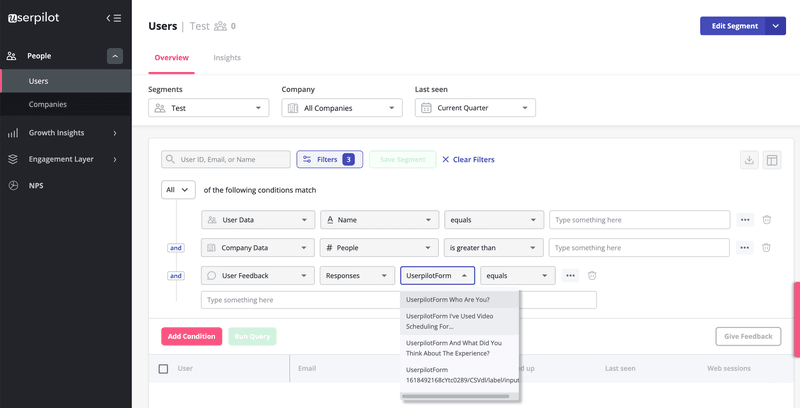
What is micro-segmentation in B2B marketing?
Micro-segmentation in B2B marketing involves breaking down a company’s target market or customer base into smaller sub-groups that share common characteristics.
These shared characteristics are specific to individual customers, not the company they represent as a whole.
For example, you could segment your customers based on in-app behavior, use cases, or job roles.
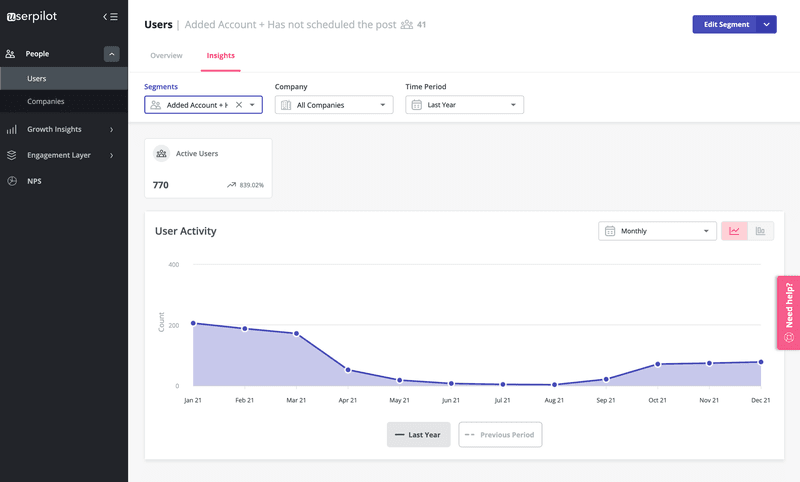
What are the benefits of micro-segmentation?
Micro-segmenting your target audience is beneficial for many reasons:
- It helps B2B companies share hyper-relevant marketing content that’s interesting and helpful for a specific micro-segment. Marketers can more easily speak to a customer’s needs, challenges and wishes by crafting marketing campaigns with one specific segment in mind.
- Micro-segmentation helps you group users by behavioral patterns. With this information, you can boost product adoption by prioritizing which features to promote to each segment.
- It helps with budget allocation for your marketing campaigns. With segmentation, you can better identify who your highest-value segments are, based on CLV (customer lifetime value). Spending more resources on acquiring more of these types of customers will produce a better ROI.
What are the most common variables for B2B market segments?
Let’s cover the most common variables that B2B companies consider when segmenting their market.
Demographic segmentation
Organizing your market segments by demographics, such as by industry, geographical location or an organization’s size, helps you make future decisions on the areas you should serve.
For example, if you have a large segment of customers who live in Europe, you should prioritize expansion in Europe.
Product usage segmentation
Defining segments based on product usage, such as feature usage or user/non-user status, can help you organize your marketing efforts.
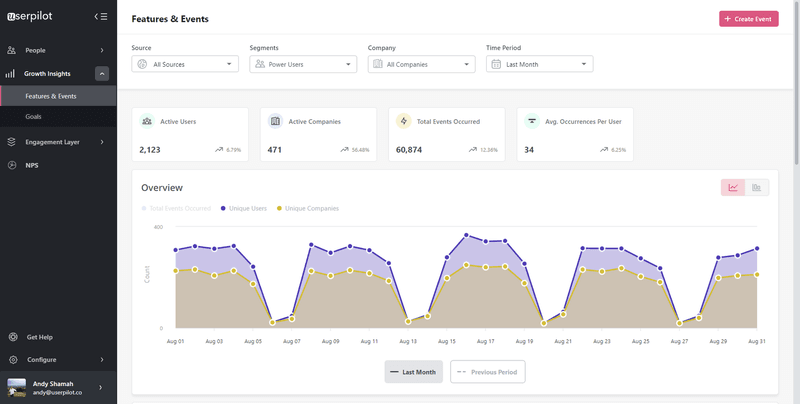
For example, you send out different marketing content to people who are active customers vs. people who are leads, but not yet customers.
Market segmentation makes this process easier.
Purchasing behavior segmentation
Purchasing behavior is another common way to organize B2B market segments.
For example, which customers prefer monthly plans vs. annual plans?
If you notice patterns swinging one way or another, you can make pricing adjustments. Do your customers have a centralized or decentralized purchasing approach? Your sales team can make strategy adjustments based on these factors.
Situational factors segmentation
Situational factors cover variables such as urgency, order size, and product use cases. Understanding your market’s situational factors will also help you to prioritize marketing and product development.
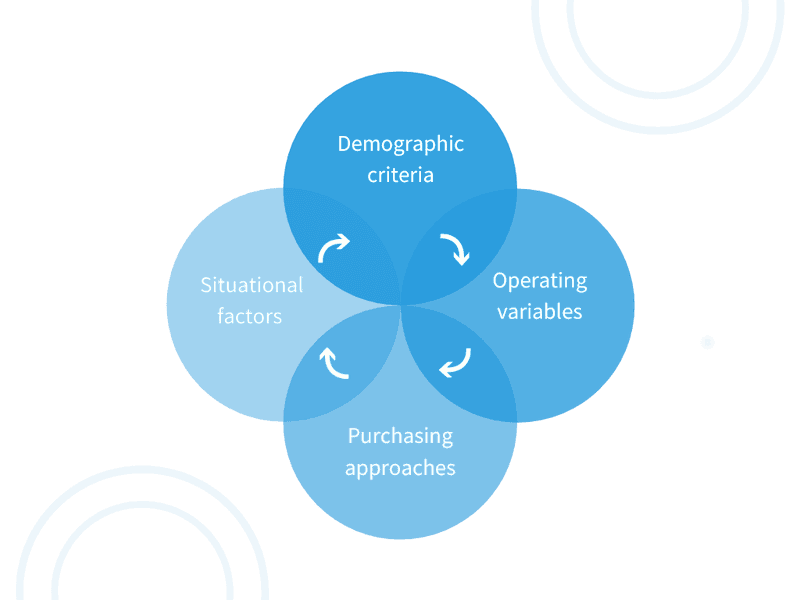
Macro and micro-segmentation (B2B): which one should you use?
Micro-segmentation is the better option for B2B marketing and will generate better results.
Why?
Macro segmentation is not as precise as micro-segmentation. Since macro segmentation is based on high-level company data, such as geographical location or industry, the segments end up being larger and less granular.
On the other hand, micro-segmentation relies on customer-specific data such as in-app behavior, purchasing patterns, and preferred products. These signals are more useful for delivering highly-personalized content that’s the most relevant to the customer.
That being said, micro-segmentation is a more difficult task that requires more time, effort, and resources. But, the precise segments you create will make your marketing campaigns more effective at generating revenue.
Most companies start with macro segmentation in the early days when time and resources are limited. As they grow, they get more granular with their marketing segmentation and move on to micro-segmenting their target audience and existing customers.
Macro and micro-segmentation (B2B) example
Let’s use the project management software, ClickUp, as an example to demonstrate macro and micro-segmentation.
If ClickUp wanted to use macro segmentation to divide their users, they would consider these variables:
- Location – ClickUp can create segments based on location, such as one group for U.S. users, another for Canadian users, and so on.
- Industry –They could divide their users by industry: finance, software, agency, etc.
- Company Size – Customers can be divided by their organizational size. For example, companies with 1-10 employees, 10-50 employees, and so on.
If ClickUp wanted to use micro-segmentation to organize their customers, they would consider various factors like:
- Feature Usage – Example: Who is using the Goals feature 3+ times per week?
- Integrations – Example: Which users connected Slack to their ClickUp account?
- Product Behaviour – Example: Who uses the mobile app and desktop version vs. exclusively the desktop version?
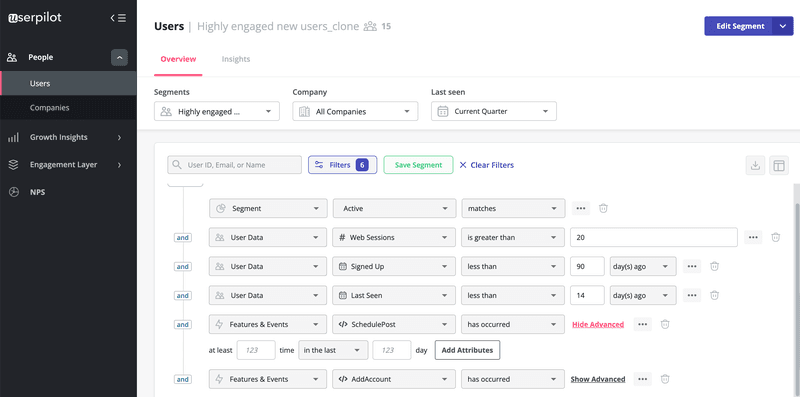
How to conduct micro-segmentation in B2B SaaS?
Ready to start using micro-segmentation to improve your marketing actions? Here are three strategies to try out.
Monitor customer’s actions in-app and track feature usage
To start with segmentation, you first need to know what customers are actually doing inside your product.
You need to understand how they’re behaving and engaging with different features.
This will help you group your users depending on which stage of the journey they’re at and offer tailored suggestions on new features they should discover.
All of those efforts combine to improve product adoption.
Use feature tagging to track customer interactions and sort them by similar in-app behaviors.
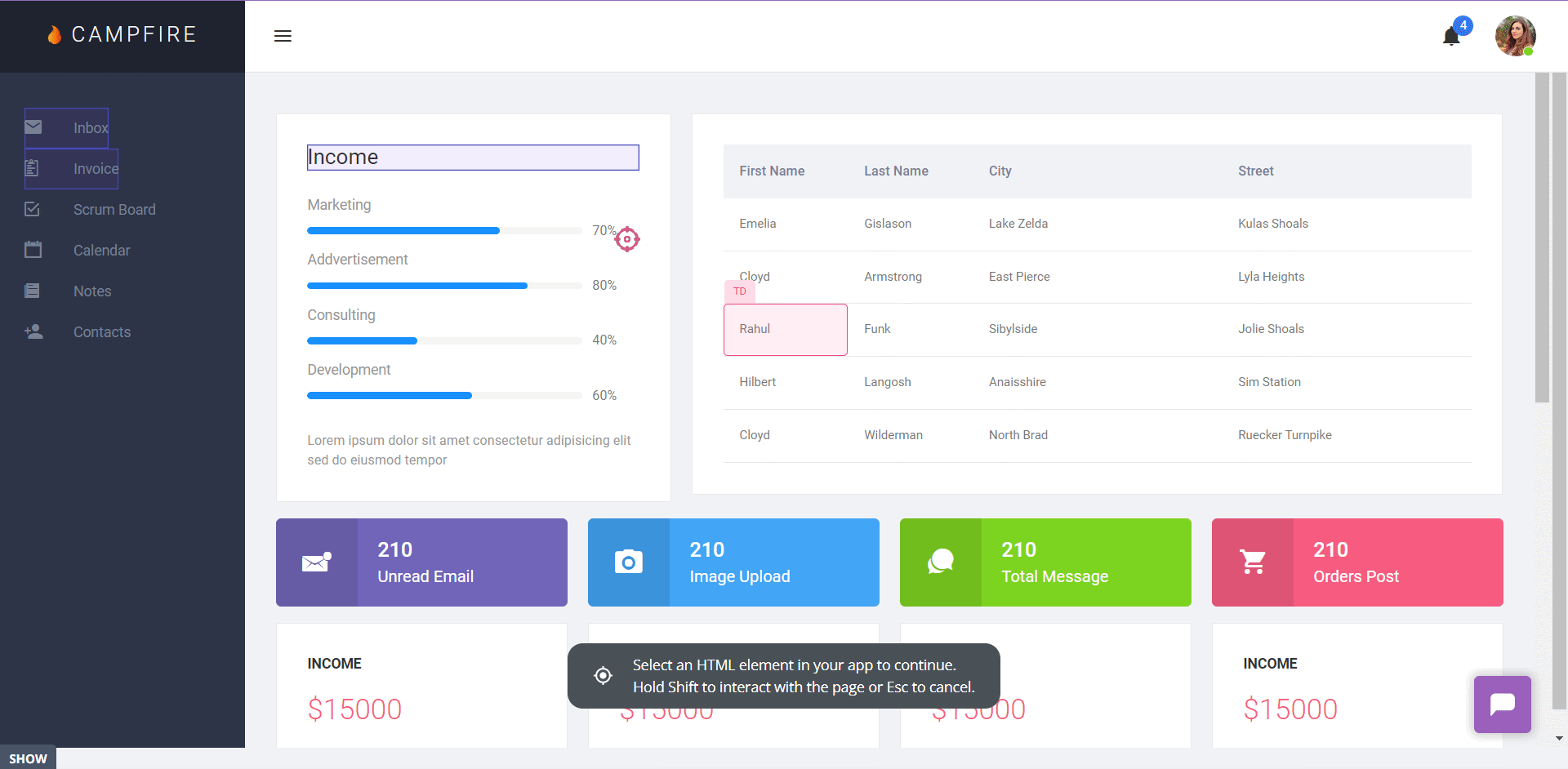
These will allow you to also trigger messages that encourage them to engage with new features.

Choose from a variety of segmentation criteria to create precise segments
As we mentioned before, micro-segments are highly targeted and narrowed-down groups of customers that share a characteristic.
You can and should use different segmentation criteria for every micro-segment that you’re creating.
In Userpilot, you can choose from advanced segmentation options such as firmographic factors, technographic factors, product behavior, loyalty levels such as NPS score, and more.
Keep your segments precise to maximize your marketing actions.
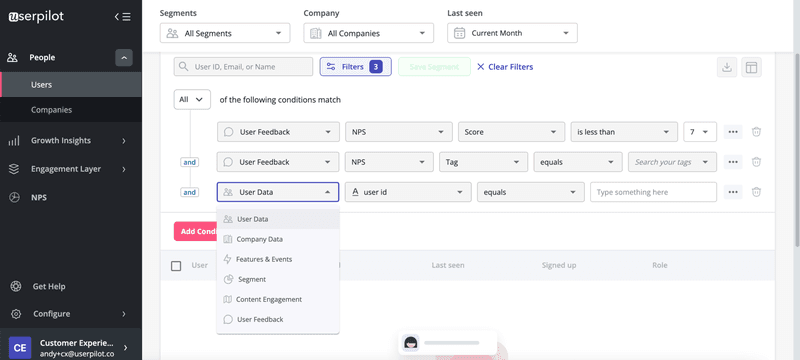
Group users into cohorts
Create cohorts of users to get a better understanding of that small group of customers.
Cohort analysis involves grouping users based on behavioral characteristics, such as churn rate (when a customer stops using your product or leaves).
When you investigate your cohorts, you can notice patterns among segments.
For example, when you create a cohort of users who’ve churned in the last 30 days, you can analyze that cohort to see which segment has churned the most (eg. users in the finance industry).
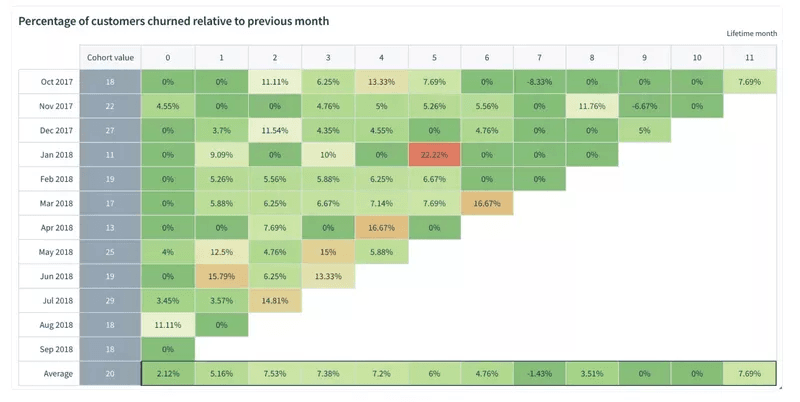
How to create hyper-personalized experiences with macro and micro-segmentation (B2B) strategies
Once you have your micro-segments created, it’s time to create hyper-personalized experiences that increase customer loyalty and lifetime value (LTV).
Offer personalized help to inactive customers and activate them
Customers might get stuck if your interface is complex or there’s no in-app guidance in place. When customers get stuck and see no way out, they stop trying and leave.
All hope isn’t lost yet. You can get those customers back into using your product with just a few steps.
First, identify inactive customers based on feature usage and other similar interactions.
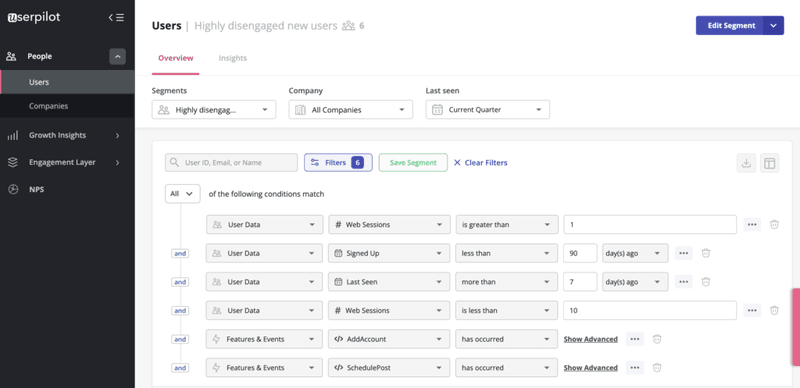
Then, reach out to those customers with contextual in-app messages or emails to offer your help.
Once they’re back on track, they can continue to get value from your product, turning back into an active user.
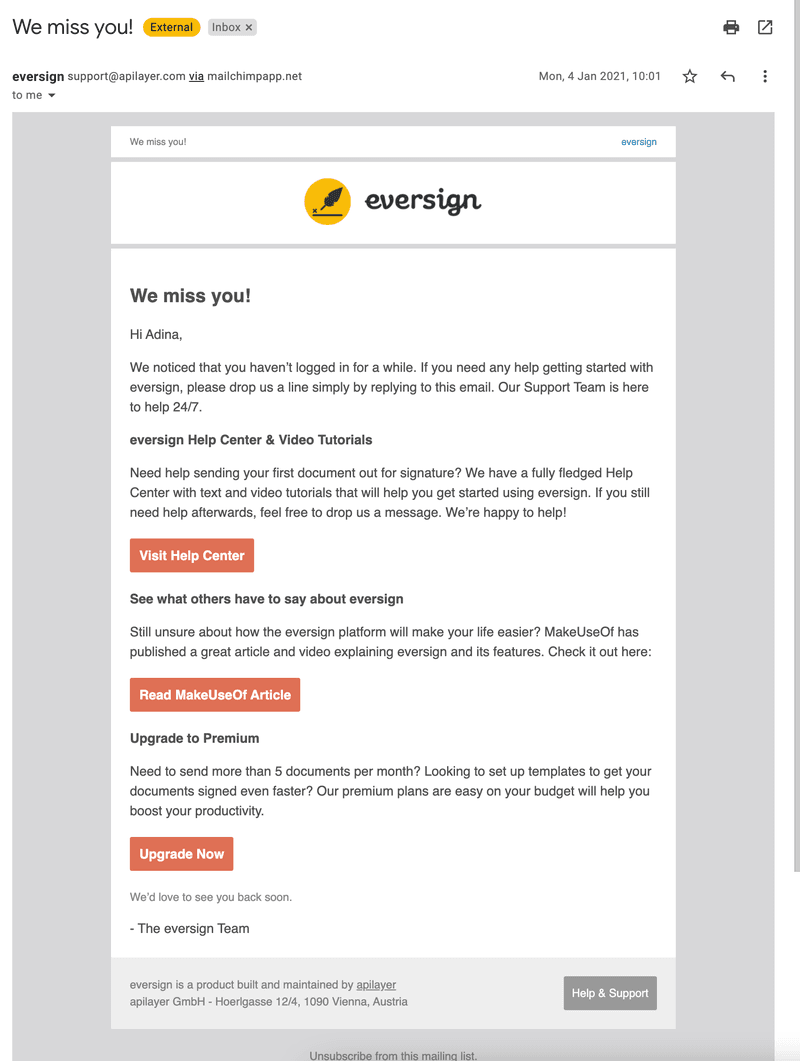
Use modals to offer account upgrades to customers who are more likely to need that
Drive account expansion at the right time to the right customers.
By tracking and segmenting users based on feature usage, you can identify customers that are using specific features frequently. Since they’re already getting value from that feature, they’re more likely to upgrade to unlock more functionality.
Jump on this opportunity by using modals to encourage account upgrades to these specific customers only.

Best micro and macro segmentation (B2B) tools
Let’s take a look at the best tools for B2B market segmentation.
Userpilot
Userpilot is a product growth platform that helps SaaS teams deliver personalized in-app experiences to improve adoption.
You get access to an advanced user segmentation system with various criteria to choose from. You can also add custom goals and use feature tagging to track in-app behavior.
Userpilot is a code-free solution with real-time insights and easy integrations with other popular tools, such as Amplitude, Mixpanel, Google Analytics and more.
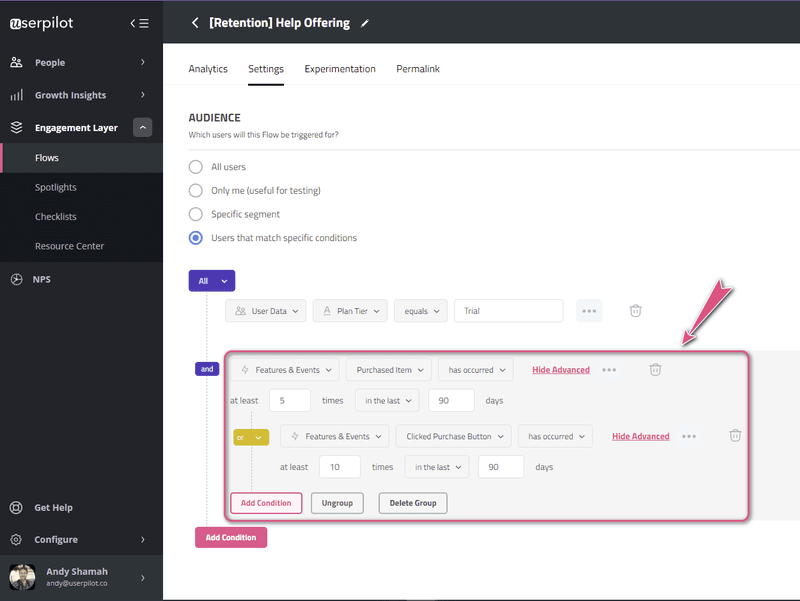
As far as pricing, Userpilot starts at $299/month (billed annually).
Baremetrics
Baremetrics is a subscription analytics software that tracks vital software metrics, such as churn rate and monthly recurring revenue.
It has a customer segmentation tool that allows you to not only create custom segments based on your chosen criteria but also to complete a detailed analysis that compares them to those metrics we mentioned above.

Baremetrics has a free trial for new users, then pricing begins at $129/month.
Conclusion
Micro-segmentation is the first step to delivering hyper-personalized marketing actions and product experiences that actually impact retention and lifetime value.
Want to build product experiences code-free? Book a demo call with our team and get started!






